Baby Park
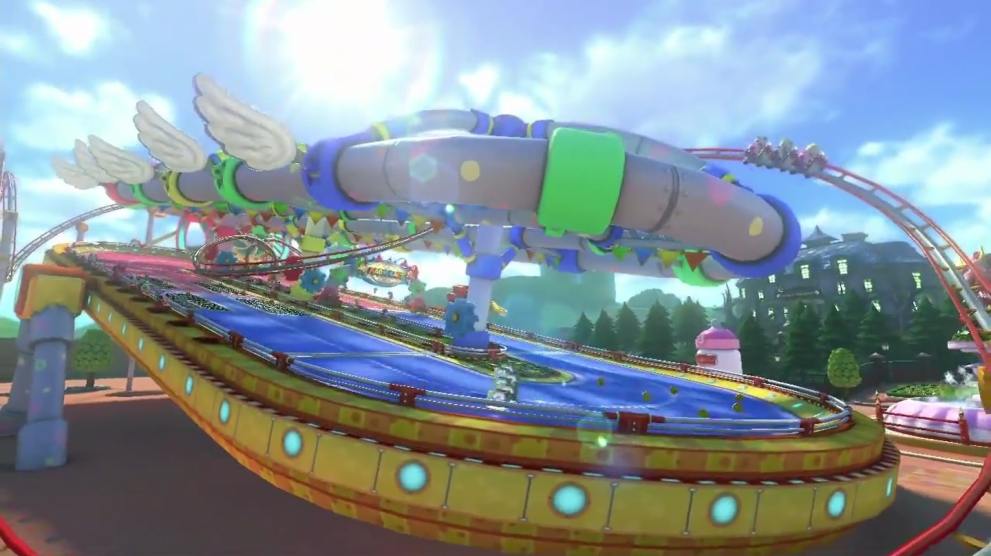
Baby Park certainly isn’t a track that’ll etch itself in your mind for its difficulty. On the contrary, it’s an incredibly simple layout — just a basic loop with a rollercoaster wrapped around it that you don’t even get to ride.
But Baby Park doesn’t need a gimmick to make it iconic. This short, basic loop is typically sped around seven or so times in a typical race, as opposed to the customary three laps most other tracks abide by. With each lap that passed, things would get more chaotic as shells ricocheted offsides, banana peels litter the narrow track, and bombs are being tossed around like nobody’s business.
Baby Park is Mario Kart’s reminder that sometimes keeping it simple is incredibly effective.
Rainbow Road
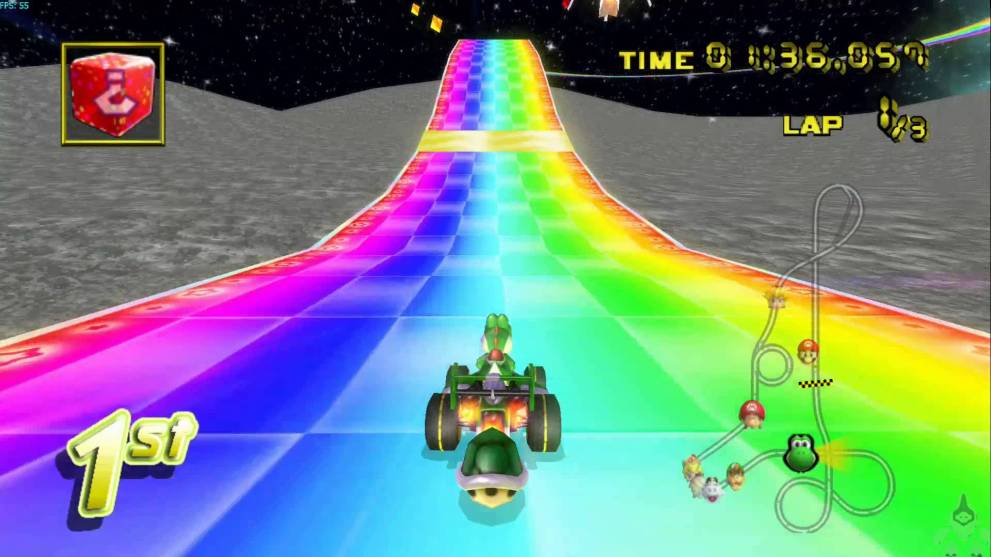
Without a doubt the most iconic track in Mario Kart history. Rainbow Road has seen many different variations, getting a refresh almost every game. While the later iterations make the most of epic jumps, flying through the air and impossibly twisty roads, it still doesn’t make the original any less iconic, even if it’s more basic in comparison.
Rainbow Road’s combo of open sides and a seemingly slippery surface has led to millions of casualties as players went careering over the sides, plummeting to their deaths. That on its own is reason enough for it to find its place on this list.
Bowser’s Castle
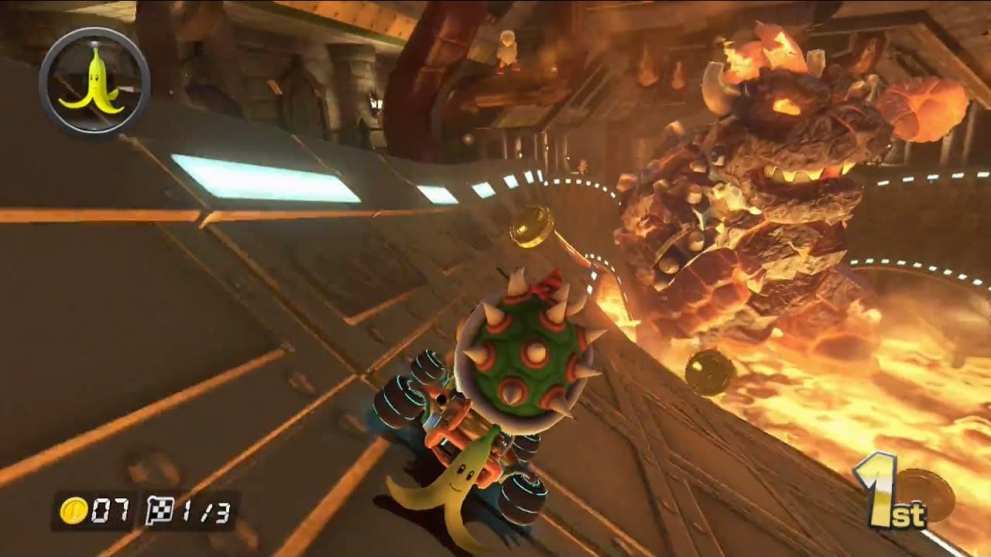
Much like Rainbow Road, Bowser’s Castle has seen ample iterations over the course of the Mario Kart series. The track has seen a new version in almost every version of the game to have released. As such, it makes it difficult to pinpoint the most iconic, because they just keep evolving an excellent track design and making it better.
Each track perfectly encapsulates the terror of being in the big bad Koopa’s castle. The villain-like statues, the pools of flaming lava, the drawbridge that towers over players as they make their way into the castle, not to mention the numerous Thwomps trying to crush you as you weave your way through the long, winding corridors.
DK Mountain
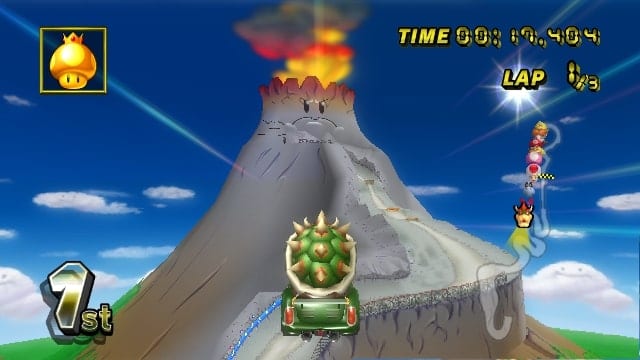
DK Mountain was the first Mario Kart track I remember truly sticking in my head because of its sheer scale. Starting off on a jungle road, players drifted and boosted their way up to an enormous cannon that fired them up to the top of an erupting volcano.
Drifting your way down the dirt path back to the start line, boulders rolling after you and a series of hairpin turns is exhilarating and makes for one of the most intense and memorable races we’ve had the joy of taking part in.
Tick-Tock Clock
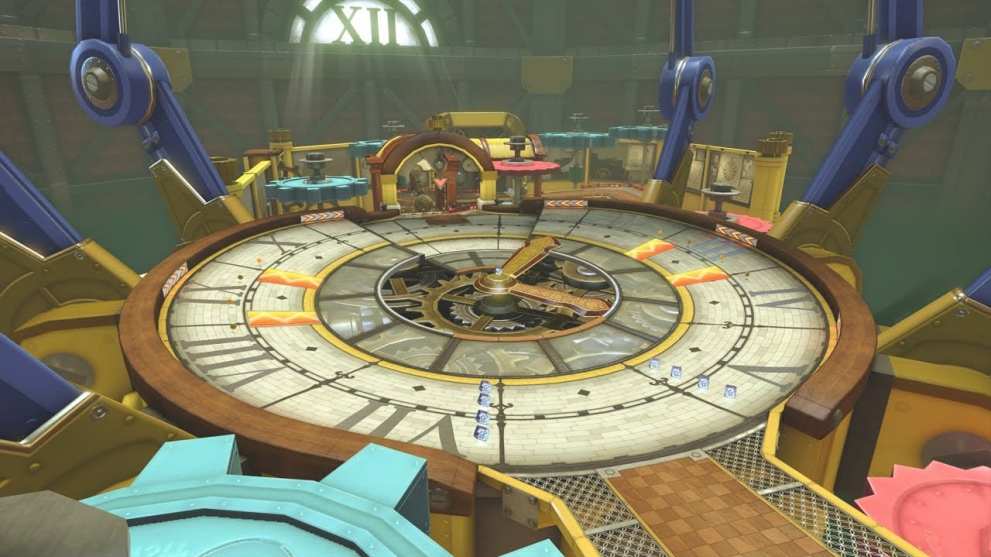
First appearing in Mario Kart DS and returning in Mario Kart 8’s Lightning Cup was Tick-Tock Clock.
As the name suggests, players will find themselves speeding around the inner mechanisms of a clock, grinding across gears, avoiding turning hands, and weaving between swinging pendulums. Oh, and don’t forget the cogs right before the start/finish line. Pro tip: ride up the right one for a final little boost to help you pip pole position.
Tick-Tock Clock is Mario Kart track design at its best — a zany idea developed into a balanced track to make it wholly unique in the series’ catalog of tracks.
Waluigi Pinball
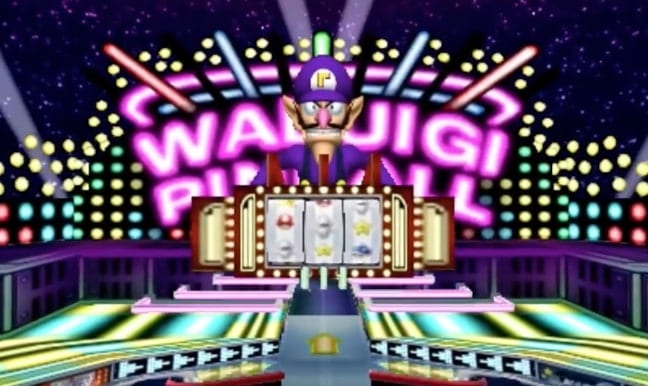
What would be more ridiculous than racing across a rainbow road levitating in space, or racing around the inside of a clock? Why, racing across a pinball board, and one for Waluigi no less!
Another track brought to us by Mario Kart DS, Waluigi Pinball starts off by having players flying through the air courtesy of a Dash Panel meant for pinballs as they’re sent to the top of the board. Now it’s a case of using the various rails and paths along the board to make your way down to the bottom, with neon lights flashing. And who can forget out great purple-clad overlord looking down with his, er, grinning face (?) at the kart-based chaos unfolding in front of him.
Also, the cameo of pinballs rolling around trying to crush you, particularly when they reach the bumper section as they come flying at you from each and every angle. Mario Kart perfection.
Maple Treeway
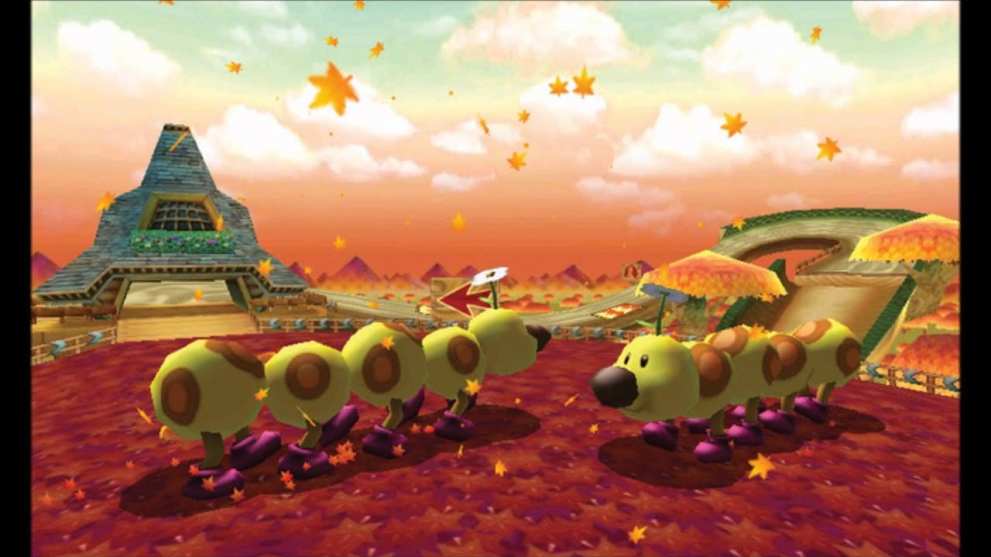
There’s a lot to love about Maple Treeway, introduced in Mario Kart Wii: the incredibly catchy soundtrack, the maple leaves falling from the sky, drifting around slim, twisted branches, or the smiling faces of the Wiggler’s strolling across its large open area.
All those maple leaves can gather in piles on the track, containing items like Banana Peels, Mushrooms, or occasionally a Star. Oh, and we can’t forget the bouncing net that enabled players to make the most of Mario Kart Wii’s new ‘trick’ system to gain an addition boost.
Maple Treeway isn’t the most technically difficult track in Mario Kart’s history, but it is iconic for how well it encapsulates the ‘Fall’ season… also the music.
Coconut Mall
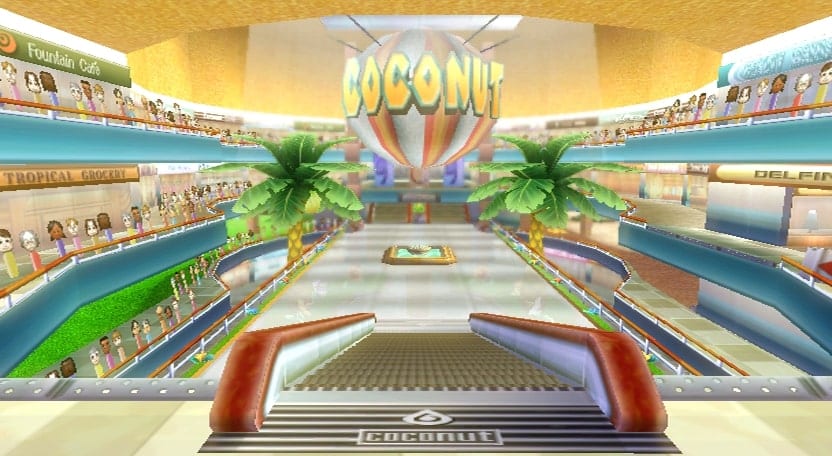
Is there anything more nerve-wracking than having your cardboard cutout Mii’s lining the inside of Coconut Mall as you try and claim your place at the top of the podium? Probably, but when Mario Kart Wii first released, it didn’t feel that way.
Coconut Mall saw players speeding up escalators (or slowed down if they went up a down escalator or vice-versa), drifting through shop fronts, jumping through fountains, and gliding through the air. Reach the final straight and you’ll be faced with a gauntlet of Mii-driven cars, all donning their creepy smiles as they drive backward and forwards, forever unable to seemingly park their car.
These Mii’s may never make it inside Coconut Mall themselves, but plenty of players have memorized its layout over the years, and it’s sure to go down as one of the greatest track in the series’ history.
Yoshi Valley
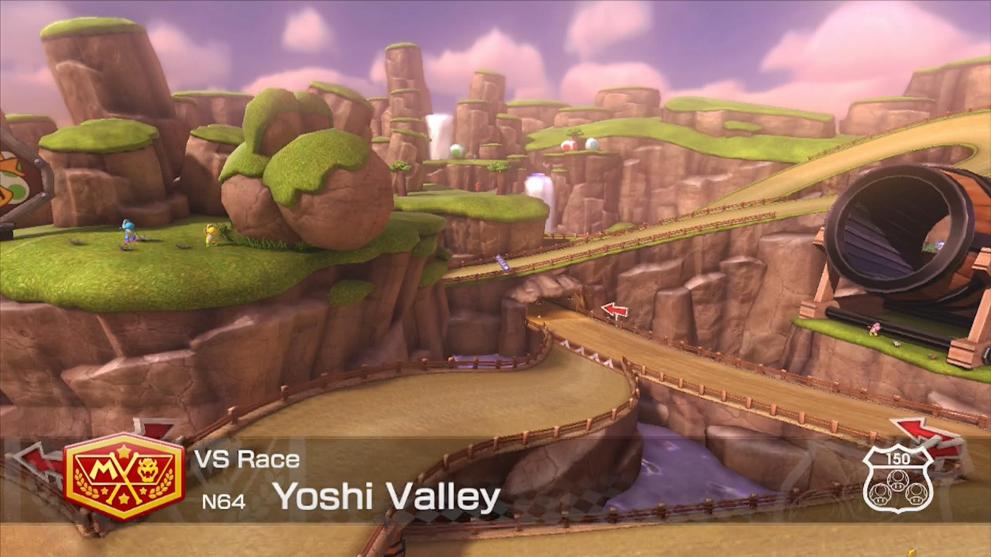
I love Yoshi. He’s the bestest dino boi you can find in video games, and I’ll fight you if you think otherwise!
That’s not why Yoshi Valley makes its way onto this list, though, even if the multiple Yoshi in the background do make this feel like you’re driving around a mysterious world.
Instead, Yoshi Valley makes its way onto this list thanks to its rather unique trait in that it’s very difficult who is in what position in the race. The track’s layout is intentionally messy, with different pathways taking the player to different parts of the course. Throw on top of this the fact that the position marker on your HUD is replaced with a ‘?’ until you finish the race and you’ve got one of the most unique and iconic tracks to go down in Mario Kart history.
Also, there’s a giant Yoshi egg, and I can’t stop thinking about the Mega Yoshi that must eventually hatch from it.
All hail Mega Yoshi!
Kalimari Desert
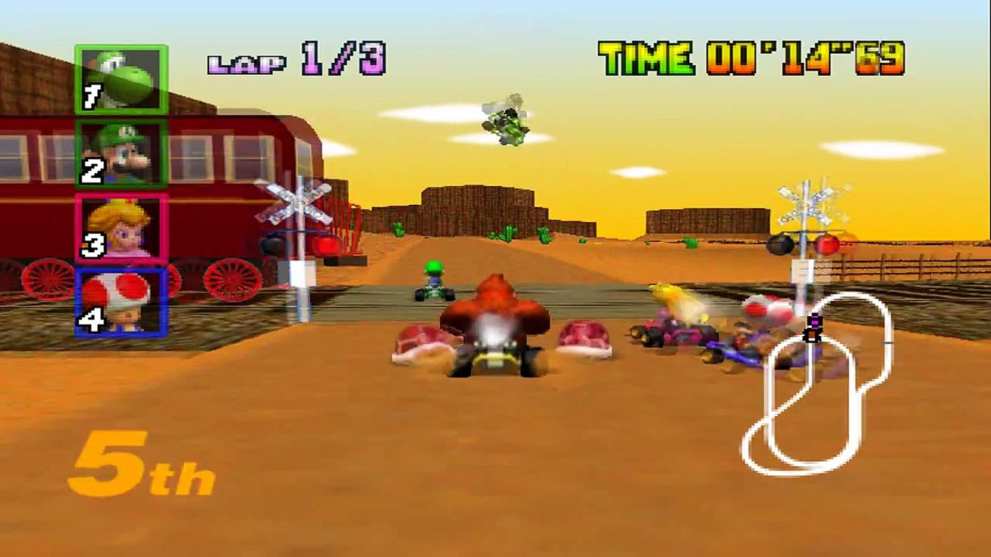
I won’t lie, Kalimari Desert made it onto this list at the very last minute, replacing the winter wonderland that is Sherbet Land.
While Kalimari Desert may be fairly simple in the track’s general layout, it has some tricks up its sleeve to make it so darn memorable. Releasing back on the N64 initially, Kalimari Desert is, predictably, very sandy. This makes it very difficult to see where you’re supposed to be going next, with advertising boards showing up at the last second to indicate an upcoming turn.
Then we come to the track’s pièce de résistance — trains that’ll crush you if you get your timings wrong when going over the railway crossings. These cross over the track at many different points, and will often be timed to get in your way. It’s a great hazard that could really turn the tide of a race in a matter of seconds.
